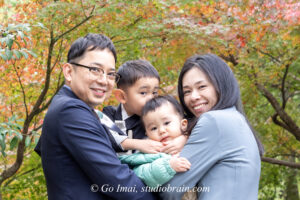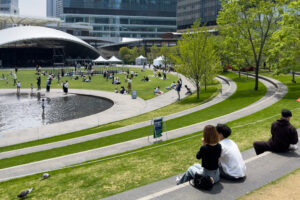スズメの減少に関して、スズメ写真家として取材を受けました
NHK WORLD-JAPAN NEWS
動画アーカイブは、Youtubeでご覧になれます。
記事版はこちら
https://www3.nhk.or.jp/nhkworld/en/news/backstories/3841
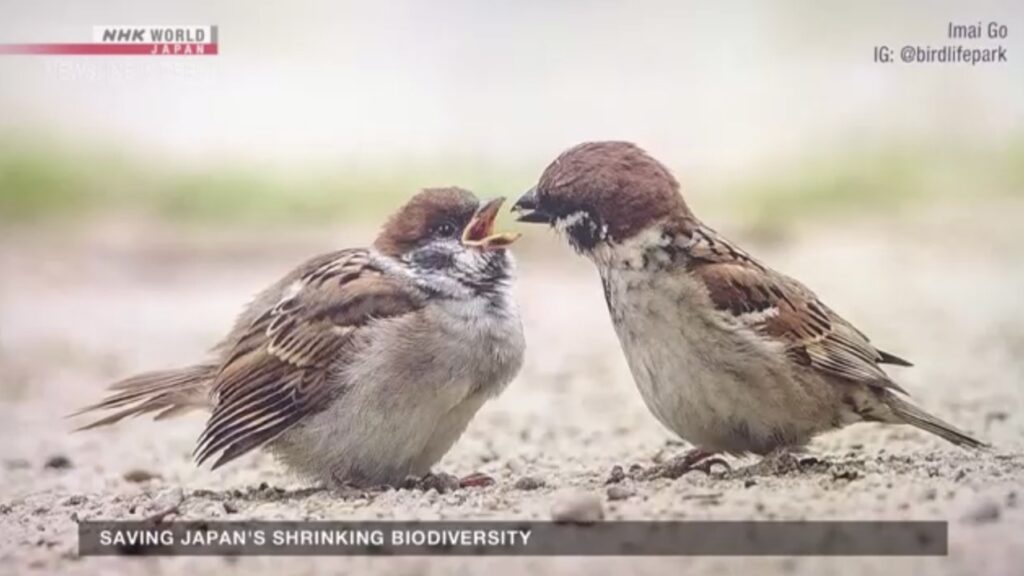
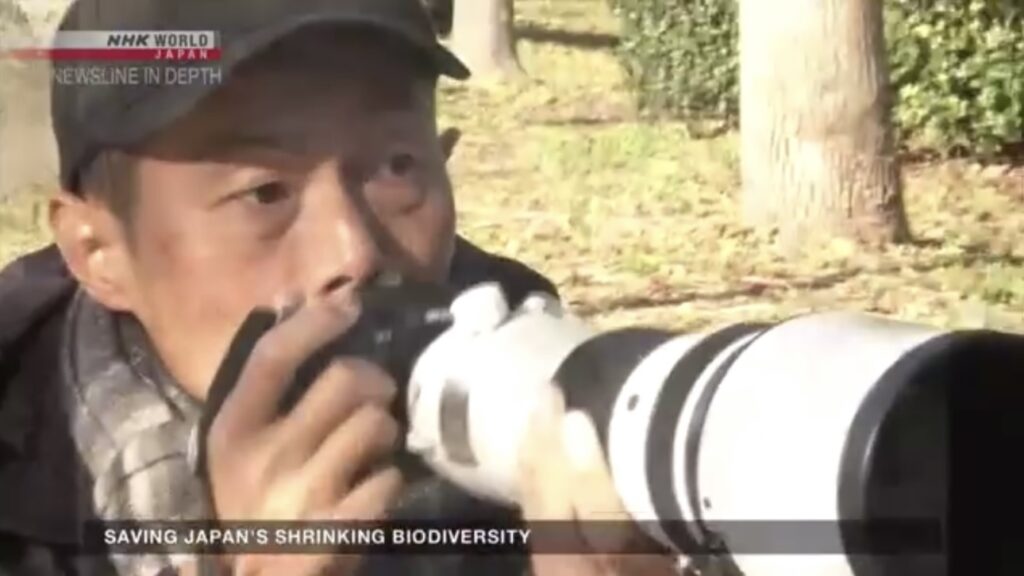

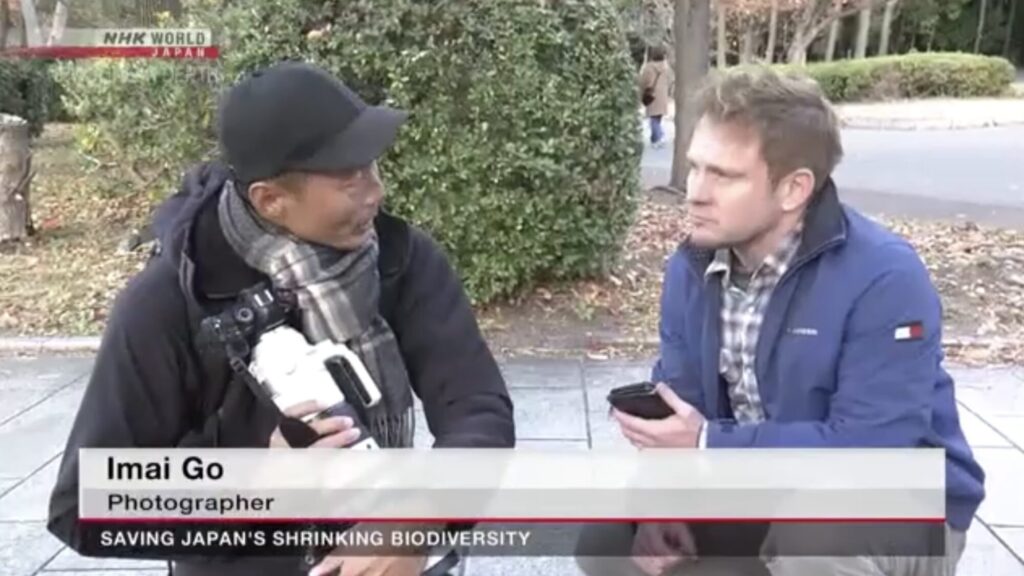
概要(日本語訳あり)
The loss of biodiversity is a crisis that's being felt all around the world. The problem also exists here in Japan, where rapid post-war development and changing lifestyles have disrupted the habitats of many living creatures.
NHK World's John Leduc is here to tell us more about it. Come on in, John. Hi, Rati. Good to have you here. It's good to be here. So I've been looking into the loss of biodiversity here in Japan, and I've found that one of the most common species of birds, sparrows, or susume in Japanese, are actually in decline.
You're right. Come to think of it. I guess I haven't seen susume much these days, but they're such iconic birds. They really are. And for a long time in Japan, they were used in poems, proverbs, all kinds of art, really.
And susume are also an important part of Japan's ecosystem, and their drop in numbers is a sign that something isn't right. I went out to see how serious the problem is and to speak to people who are trying to reverse this disturbing trend.
Imai Go is a professional landscape photographer, but four years ago, a chance encounter caused him to turn his lens exclusively toward sparrows. I was taking some photos of cherry blossoms one day, and through the lens, I caught a glimpse of a sparrow nibbling on the buds.
I had no idea they did that. My curiosity was piqued, and I haven't stopped. taking photos of them ever since. I was hooked. Sparrows were once so common that you were guaranteed to see them in both urban and rural areas.
But at one point, Imai began to realize that he was seeing fewer of the birds about. He wasn't wrong. According to the Japan's Nature Conservation Society over the past two decades, the sparrow population has dropped more than three and a half percent a year.
That threat means sparrows could one day be added to the endangered species list. I've lived in Osaka for over 50 years, and I can see that they're definitely disappearing. They used to make their nests in the eaves of old houses, but with so many people living in apartment complexes now, it's become more difficult for them to find places to make their nests and raise their young.
To find out what's behind their decline in numbers, I went to meet with an ornithologist who has been conducting bird census research. Ueta Mutsuyuki has been studying the changes in Japan's bird populations for the past 20 years.
The red dots on this survey, conducted by Japan Bird Research Association through the 1990s to 2010s, show where sparrows are no longer seen. The sparrow population around the country has been dropping especially in farming areas.
Several overseas studies have found a direct link between the use of chemical fertilizers and disappearing birds and insects. There's a chance that the same stands true for Japan. Traditionally Japanese farmers used compost made of fallen leaves and grass, which they then spread in their rice paddies.
But with the introduction of chemical fertilizers and pesticides that were cheap and less time consuming, that all changed. We used to pull weeds by hand. With Japan's aging population, more people began using chemical pesticides.
These chemicals destroy the weeds but also insects that eat the vegetation and birds that eat the insects. Another reason for the disappearance of sparrows is that there are fewer rice paddies where they used to flock to feed on the grains of rice and insects.
To try and reverse this trend, the photographer, Imai Goh, has become an advocate for sparrows. His social media site is filled with images of sparrows and has become a place where people can get a more intimate look at the delicate birds.
His photography has not only attracted attention in Japan, but overseas too. Some of his followers have been so inspired that they've started taking photographs of sparrows themselves in a bid to appeal to others to take care of these vulnerable creatures.
Our goal is to spread awareness of not just how cute sparrows are, but that we all need to watch over and protect them. If we can stop destroying the sparrows habitat, maybe we can stop them from vanishing.
It's really about our perception of them, and if I can be a catalyst in getting more people to want to save sparrows, that would be a step in the right direction. So John, changes in Japanese society have really made it hard for sparrows to survive.
It really has and like we saw in the report, there are a lot of factors at play and sadly it's not just the sparrows that are being affected, we're actually seeing other creatures all connected in the food chain that are vanishing too.
概要、日本語訳
生物多様性の喪失は、世界中で感じられている危機です。この問題は日本にも存在しており、戦後の急速な開発と生活様式の変化が、多くの生き物たちの生息地を壊してきました。
私は日本における生物多様性の喪失について調べてきたのですが、その中で、非常に一般的な鳥であるスズメ(日本語では「すずめ」)の数が減少していることがわかりました。
その通りですね。考えてみると、最近スズメをあまり見かけない気がします。それに、スズメは日本の象徴的な鳥ですからね。
本当にそうです。日本では長い間、スズメは詩やことわざ、さまざまな芸術作品に登場してきました。
スズメは日本の生態系にとっても重要な存在で、その数の減少は何かがおかしいというサインです。私はその問題がどれほど深刻なのか、そしてこの不安な傾向を逆転させようと努力している人々に話を聞くために出かけてきました。
今井剛(いまい ごう)さんはプロの写真家ですが、4年前に偶然出会った出来事がきっかけで、スズメだけを撮影するようになりました。ある日、桜の花を撮影していると、レンズ越しにスズメがつぼみをついばんでいるのを見かけたんです。
私は、スズメがそんなことをするとは思ってもみませんでした。興味が湧いて、それ以来ずっとスズメの写真を撮り続けています。すっかり魅了されてしまいました。
スズメはかつて、都市部でも田舎でも簡単に見かけることができる鳥でした。しかし、今井さんは次第に、スズメの姿を見かけることが少なくなったことに気づきました。
その気づきは間違っていませんでした。日本自然保護協会によると、過去20年間でスズメの個体数は年間で3.5%以上減少しています。このままだと、スズメは絶滅危惧種のリストに追加される可能性があります。
大阪に50年以上住んでいますが、確かにスズメが減ってきているのはわかります。昔は古い家の軒先に巣を作っていましたが、今ではマンションに住む人が増え、スズメたちが巣を作り、子育てをする場所を見つけるのが難しくなっています。
その減少の原因を探るため、私は鳥類学者である上田睦幸(うえだ まつゆき)さんに会い、鳥の調査研究を行っている方に話を聞きました。上田さんは、20年間にわたり日本の鳥の個体数の変化を研究してきました。
こちらは日本鳥類研究所が1990年代から2010年代にかけて実施した調査の結果です。この地図に赤い点が示す場所では、スズメが見られなくなったことを示しています。スズメの個体数は、特に農村地域で減少していることがわかります。
いくつかの海外の研究では、化学肥料の使用が鳥や昆虫の減少と直接的に関連していることがわかっています。日本でも同じことが当てはまる可能性があります。日本の農家はかつて、落ち葉や草を使って作った堆肥を田んぼに撒いていましたが、化学肥料や農薬の導入により、それが変わりました。
以前は手作業で雑草を取っていましたが、高齢化社会の影響で、農薬を使う人が増えました。これらの化学薬品は雑草を駆除しますが、同時に植物を食べる昆虫や、それを食べる鳥たちにも影響を与えています。さらに、スズメの減少の原因の一つは、かつてスズメが集まって餌を取っていた田んぼが減少していることです。
この状況を逆転させるために、今井剛さんはスズメの保護活動を行っています。彼のソーシャルメディアにはスズメの写真がたくさん投稿されており、これを通じて人々はスズメの繊細な姿をもっと身近に感じることができます。
今井さんの写真は、日本国内だけでなく海外でも注目を集めており、フォロワーの中には、スズメを撮影し始めた人たちもいます。彼らは、スズメの保護を呼びかけるために、写真を通じて他の人々に訴えかけているのです。
私たちの目標は、スズメがどれほど可愛いかを広めるだけでなく、皆で見守り、保護しなければならないことを伝えることです。もしスズメの生息地を守ることができれば、彼らが消えていくのを防ぐことができるかもしれません。
それは、私たちのスズメに対する認識の問題です。もし私が、もっと多くの人々がスズメを守りたいと思うきっかけになれるなら、それは良い一歩となるでしょう。
ジョン、日本の社会の変化がスズメの生存に本当に大きな影響を与えていますね。
確かにそうです。レポートでも見ましたが、さまざまな要因が関わっていて、残念ながらスズメだけでなく、食物連鎖でつながった他の生物たちも影響を受けています。

